Tintaldra
On the left bank of the upper Murray, the Victorian side of the boarder, and near the junction of the Cudgewa Creek, you will find Tintaldra. A quaint rural hamlet, general store and pub included, sitting in the shadow of the hills and dales that make up this spectacular river valley. Sparkling like all rivers do when untouched by mankind’s pollution and grime, the Murray river here is fresh and clean and new.
New country was what Charles Huon De Kerrilleau admired when he passed through the area in 1837. Even though the region was in the midst of a severe drought at the time, the beauty and possibilities of the upper Murray so impressed Charles that he hotfooted it to Tumut, the nearest licensing station, to take up a lease on the land surrounding present day Tintaldra. The journey was not only long, hot and tiresome, but no white man had ever ventured into that part of the country before – it was a lonely challenge to cross those mountains. The exhausted Charles De Kerrilleau went strait to the pub upon his arrival at Tumut, and while resting himself there before going to the licensing station, he told proudly of his beautiful land discovery. Rowland Shelly, a Tumut landholder, originally from County Argyle, upon hearing the news of fair land in the upper Murray, made his way discreetly out of the pub and to the licensing station to take up a lease on the land himself. He took Welaragang Station for himself and Tintaldra Station for his brother William. And so it came to pass that William Shelly of County Argyle found himself as the manager of the Tintaldra selection, and witnessed the first white settlement of the upper Murray.
Tintaldra grew in prosperity and size, growing from 18,000 acres to 24,000 acres with the success of the cattle industry in Australia in the mid 1800’s. The station changed hands 4 times as it was being established in those early settlement times, until at last it was sold in 1858 to Mr Sydney Grandison Watson, and life on the quiet station outpost was to alter quite drastically.
Watson was a landowner from Walwa, who gradually progressed his holdings further and further upriver, taking up properties to total over 100,000 acres. Sydney Watson, his wife Isabella and their family lived an isolated but very prosperous life high in the upper Murray hills.
With the Victorian population swelling during the gold rush of the 1850’s, cattle grazing became quite lucrative for river stations, suppling meat to the gold fields of Bendigo, Beechworth and Ballarat. Watsons Tintaldra station had a big hand in the 1850’s beef market. All good things, however, come to an end as the gold began to peter out and the people remained in search of work. Sydney Watson could see money to be made from the new faces who were beginning to arrive in the Tintaldra area, and with good business sense, he opened up a punt to cross the river and a general store to service the growing community. Gradually the township of Tintaldra grew up about these enterprises, and a pub was the final addition to a township fully owned by Sydney Grandison Watson.
The township became a mecca for the upper Murray locals. With a policeman, postal service, doctor, blacksmith, wheelwright and customs house, it became the foremost township of the area. But this late 1800’s boom was the first and really the last boom time for the little town. A monopoly of ownership at Tintaldra saw preference given to the townships of Walwa and Corryong for new businesses, and Tintaldra became and stayed the quaint river village it is today.
Sydney Watson continued running his property, it’s size slowly dwindling to the area surrounding the township, where once it had extended along both sides of the Murray river for many miles. In 1910 the Watson family sold both their station and the leases on their Tintaldra township enterprises, the input they had given to this vibrant country community drew to a final close.
Sophie De Jardine, whose father served as French Counsel General in Melbourne, married Kenneth Mackinnon in Paris in 1909, and returned to Australia to live. The Mackinnon family purchased “Tintaldra” once they realised that their station, “Marion Downs”, in Queensland would not be suitable for Sophie. And so the generations of Mackinnons were established at the Tintaldra Homestead in 1910.
A weatherboard homestead of 54 squares, “Tintaldra” had been built at the turn of the century, by the Watsons, to take advantage of the spectacular mountain views of the river, its valley and the glorious distant Snowy Mountains. Sophie established formal hedges and rose gardens to grace the granity hillside on which the homestead stood.
30 years after their arrival in the area, the outbreak of World War 2 rocked the community of Tintaldra, many local boys going to fight for their country and for freedom. Kenneth and Sophie’s three children, Ian, Jaqueline and Ronald were part of the 1940’s era of Australian fighting men and women. Both Mackinnon boys, Ian and Ronald, proudly fought for Australia in the stark Middle East, and with great relief returned to the rolling hills and mountains of the Snowy’s. It was at this time that the Government proclaimed 2000 acres of “Tintaldra” on the Cudgewa road, and residual NSW land holdings as Soldier settlement blocks. “Tintaldra” shrunk smaller yet again.
In 1951 it was newly married Ronald who stepped into the management role at the station, while brother Ian pursued a legal career in Melbourne, remaining chairmen of the pastoral company. Together Ronald, wife Jenny and their three children Jamie, Annabel and Alex worked the Tintaldra land, and under took to change the homestead somewhat.
Leaving the front of the home untouched, Ronald and Jenny removed the 2 oldest wings of the house and replaced them with a kitchen and sunroom, creating a practical, family oriented dwelling. Handmade bricks from the old kitchen were used to create a walled in court yard, in which original grapevines still grow, producing abundantly.
In 1952, devastation arrived on a scorching hot wind. With fear in the air, and no doubt sweat streaming down sooty faces, Ronald and Jenny fought fierce bushfires that threatened to destroy their historic homestead. They swept into the station and devoured trees, land and cattle, the family managing, fortunately, to save their own lives and the weatherboard house they called their home. Once the immediate threat had blown over, the charred ground was a constant reminder that the residents of the station faced the hard task of starting over.
Thanks to Jenny Mackinnons diligent work, the homestead was soon surrounded by the shade of cyprus pines, Japanese maples, poplars, magnolias, blue spruces and a tulip tree. A fine orchard was established, providing fruit for the Mackinnons of the upper Murray, earth having to be brought in to combat the problems of gardening on a rocky rise.
The Mackinnons have not only begun again, they have diversified and found success in the land that has been their own for 90 years. Alex Mackinnon has taken over the management of the Tintaldra property, and turned his hand to small seed and grain crops, as well as the familiar cattle.
In 1986 it was Jo who came from the city to build her life as the wife of an up country pastoralist and grazier. Alex Mackinnon met his wife when travelling in the green beauty of the Irish countryside, and brought her to the Tintaldra family home to live. Jo Mackinnon has never looked back, and does not miss Melbourne with all its business and its people at all. The initial transition for the Arts/Humanities graduate and retail worker to farmer was made all the more easy for Jo, with many marriages in the area at the same time as her own. Having lots of young couples in the district, life in the Tintaldra community has never been lonely although it has been isolated.
The community in which Jo found herself is as warm and friendly as ever it was, meeting for events and festivities at every opportunity. They are also a progressively focused people, realising that cattle will not be the mainstay forever. The need to diversify farming practises is high on the agenda of many families in the district. Herb production and renewable energy are but two of the alternatives that are opening up. Retaining youth, environmental issues, agricultural sustainability, tourism and e-commerce are high priorities for the people of Tintaldra and surrounding areas, who have formed committees to combat the associated problems with the progress of these issues. Throwing herself into country life, Jo has joined the management committee for one such organisation.
Four active children and management of the farm’s office and accounts has kept Jo busy, aside from the committee for progress. Her office is the original customs house which was moved from up the river, where the Bookkeeper use to live in days when all transactions were done by hand. The Tintaldra office still houses all the original ledgers for the station and the township.
Being of a practical nature, the Mackinnon garden has had some modifications to allow it to be more manageable for the stations mistress. Easy care salvia, roses, rosemary and lambs ears surround the cream and white retreat on the hill. Some trees have also been removed or lopped for safety. However, the homestead looses none of it’s beauty through these treatments, it brightly watches over all the excitement and activity in the ever changing upper Murray. One year it could be floods engulfing the valleys, the next it could be droughts and bushfires. In late 2000 it was the splashing of world famous long distance swimmer Tammy van Wisse right past the Tintaldra homestead on her way to South Australia that brought the station to s brief halt. Next year, who knows?
In a place perfect for fly fishing, white water rafting, canoeing, bushwalking and snow activities, is it any wonder that the Mackinnon children are as healthy and happy as any children could be. Full of exuberance, Edwina, Henry and twins Harriet and Amelia play with Sally, their golden labrador, have a hit of tennis or a swim in the Tintaldra pool, ride their horses and help Alex on the farm – there is no stopping their boundless energy and life.
When one thinks about it, a house and property are really just that – another house and property. Board and bricks and glass. Soil and water and sun. It is when a home stakes on the influences of the people who have passed through it’s doors, when a property reflects the care of those around that it becomes a thing of beauty and inspiration. At Tintaldra today there are people who love the country and it’s way of life. People who give themselves to their community. People who care about the future and making today count for tomorrow. And people who have a heritage of love and companionship with this land. With that, Tintaldra is not only another pretty property, but a place of hope, hardwork and country dignity.
** All photographs used in this article are by the incomparable Brooke Orchard at Brooke Orchard Photography - check out her highly awarded and nationally acclaimed talent !!
** All photographs used in this article are by the incomparable Brooke Orchard at Brooke Orchard Photography - check out her highly awarded and nationally acclaimed talent !!
















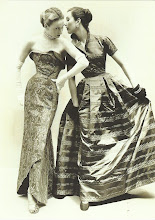
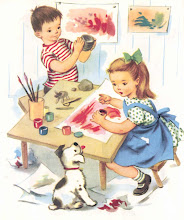
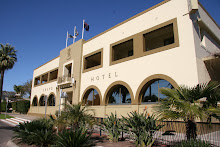


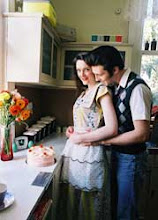
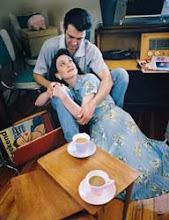
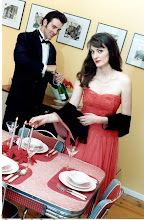
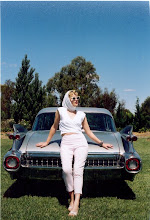











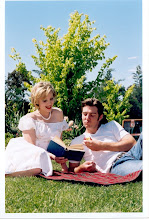





























No comments:
Post a Comment